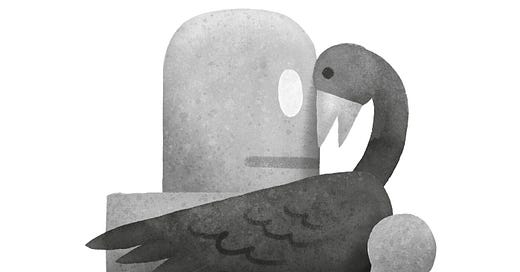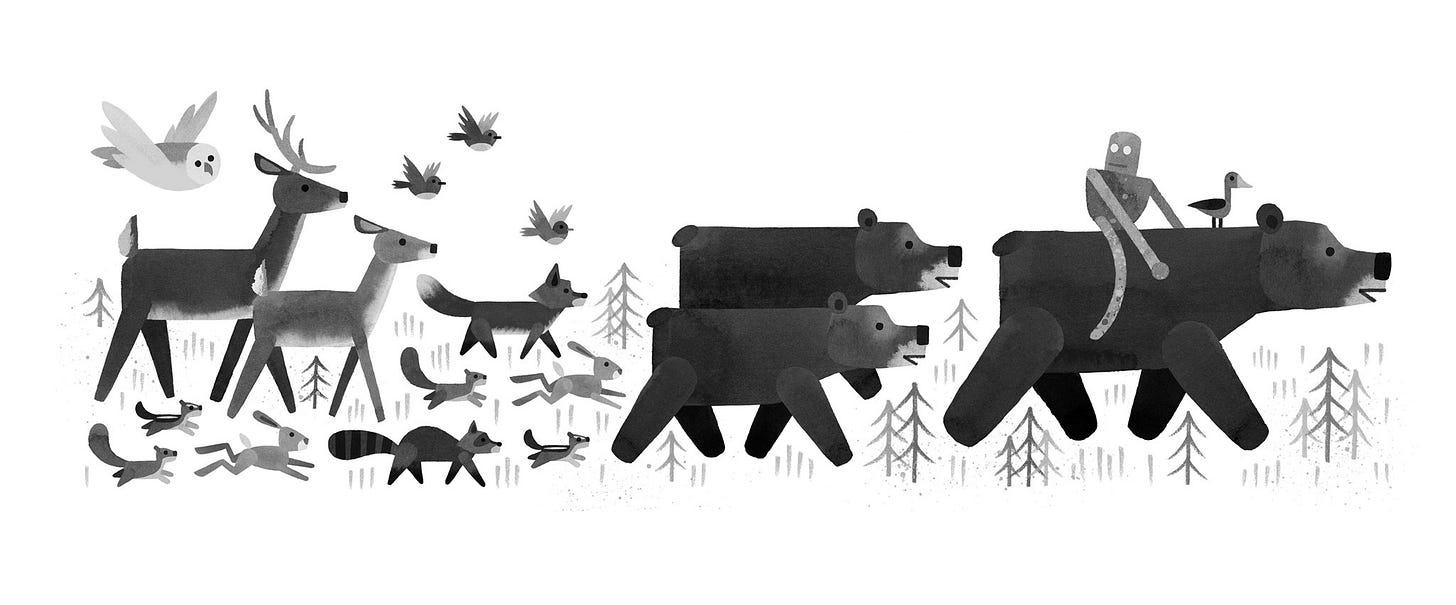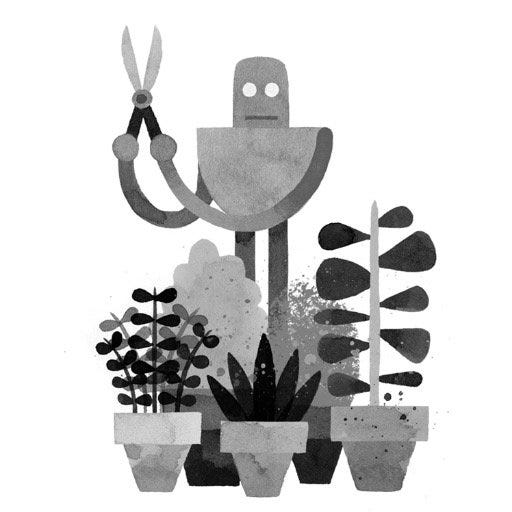Book Review: The Wild Robot
In preparation for the movie, I decided to finally pick up book one of Peter Brown's illustrated first Wild Robot novel and I was not disappointed.
Welcome to my cozy little corner of the internet!
Looking for a star rating? Check them out on my Goodreads or StoryGraph.
All illustrations in this article are by Peter Brown.
I first discovered The Wild Robot this summer after watching the previews for its upcoming film debut in theaters. I cried through the whole trailer every time I saw it. So, I undoubtedly needed to purchase the book when my husband discovered it at Arundel Books in Seattle.
The Wild Robot is an illustrated chapter book by Peter Brown following the life of the robot Roz. After a severe storm that results in Roz’s boat sinking, and sending its load, including Roz to a watery death. Roz is the only robot to survive after awakening on a pier after some Sea Otters press her start-up button. After awakening readers follow along through vivid descriptions and stunning imagery as Roz learns about who she is, who she wants to be, and those who matter most to her.
The Wild Robot is an amazing story depicting what it truly means to have found family, and the lengths one will go to protect, grow, and nurture those one cares for. It’s a wonderful portrayal of how technology and nature can overlap. My favorite part of the story was following along as Roz learns to adapt her sharp and clean edges to a more rounded, dirty, and natural look that blends in with the environment. We watch as she goes from this clean, spotless, brand-new robot, to a creature of the forest, blending in with her surroundings, walking around with a wooden foot courtesy of the beavers and raccoons, and engaging with the wildlife as if she were one herself.
“It seemed like a safe place, and safety was all the robot really wanted, so she stood there, motionless, all perfect lines and angles set against the irregular shapes of the wilderness.”
Brown’s description of wildlife, their habitats, their mannerisms, and their lifestyles in general was on point throughout the whole story. It was a perfect presentation of topics children reading Middle-aged books would learn from. I enjoyed the different takes on it and the different personalities that Brown shows readers through his writing and illustrations.
“Sometimes a lodger wouldn’t return. Sometimes a lodger would return in the belly of another lodger. As you can imagine, that made for some awkward moments.”
As we follow Roz’s journey we see as she learns new emotions, some emotions appear to already be wired into her brain, but some feel like they are learned behaviors that she doesn’t necessarily have a name for, but for the reader's sake, Brown decided to categorize. A certain level of willing suspension of disbelief has to be held when reading this story, but considering that it’s a middle-aged novel intended for younger audiences, it isn’t that hard to do. We watch as Roz becomes a mother and trusted member of the community. We see Brightbill grow older and turn into an amazing leader. We see a family built from the ground up, made of unlikely individuals, and it's so heartfelt and amazing. I highly recommend this to anyone who will listen and I hope that you enjoy it as much as I did.
I am very excited to see this already vivid story come to life in theatres this coming week. Catch me this weekend crying through the movie, because I most definitely will after having completed the book. Haven’t seen the trailer yet? You can watch it here!
Thanks for reading!
Side Note: Another great review that I highly recommend giving a read is Craig Fehrman’s review Reading Sad Books is Good For Your Kids It’s a great perspective on Peter Brown’s trilogy and the impact that his emotional exploration has on children and their relationship with emotions.






